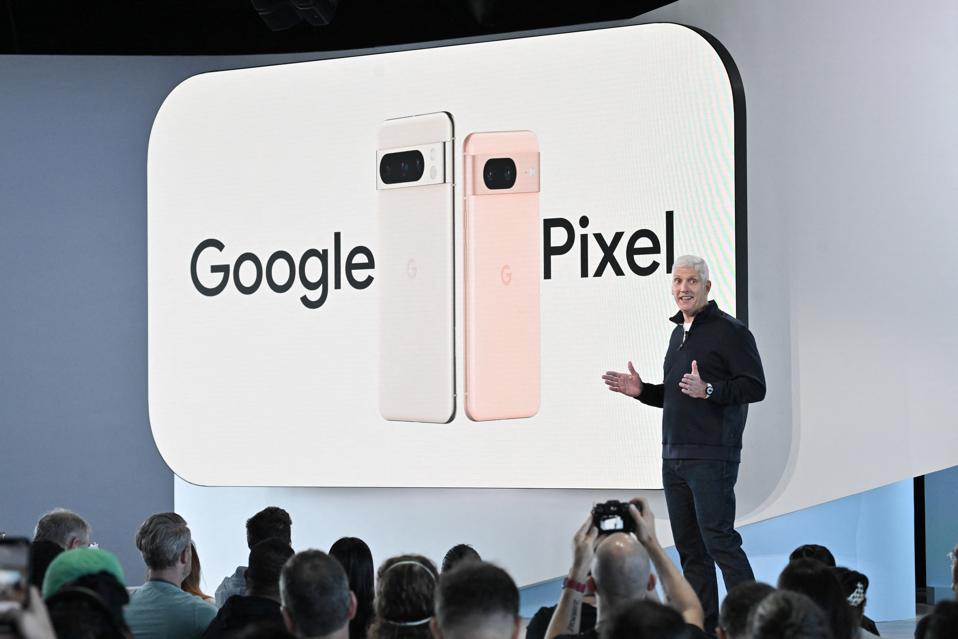There’s been lots of talk in recent weeks about ads for Super Bowl LVIII. One of the stand out campaigns came from Google, for the Pixel 8. Many talked about the heartwarming commercial as one of the more impactful spots during the game.
There’s no denying the emotional appeal of the ad, which not only made it memorable, but effective. It’s no coincidence that the inclusion that was baked into the DNA of the ad contributed greatly to its impact.
Here are four best practices Google embraced with the making of the Pixel 8 Super Bowl ad that you should adopt with your campaigns moving forward.
On Screen Representation
The ad showcases an accessibility feature for the Pixel 8, which makes it easier for people with blindness and low vision to capture pictures.
To help bring the story to life, Google included a blind actor as the lead, and had it narrated by living legend Stevie Wonder, who is also blind.
According to KR Liu, Google’s Global Head of Disability Innovation Marketing, representation of disabled people in marketing is really low in the industry, at about 2%.
Thus incorporating a disabled person as the lead character is a big deal, not only for people with disabilities to see themselves represented, but also to normalize seeing disabled people in campaigns.
The World Health Organization (WHO) says that 1 in 6 people, or 16% of the world’s population experience a significant disability — which means that from a marketing standpoint there’s still much work to be done from a representation standpoint to ensure people with disabilities don’t stay hidden.
The best practice: include more people who are part of underrepresented and underserved communities in your marketing.
Behind The Screen Representation
Another aspect of the Pixel 8 campaign that is noteworthy, is that the director Adam Morse, is also blind.
In a behind the scenes video that showcased how Morse brought the campaign to life, it was mentioned that he had the idea to put vaseline over the camera lens to better simulate what it was like with someone with visual impairment to go through daily life, and give viewers that point of view.
Morse’s lived experience as a blind person better helped him bring that experience to life via the storytelling done with the campaign.
The best practice: incorporate more people with lived experiences of the stories you are telling with your communications behind the lens.
Whether that is with directors, photographers, creative directors, stylists, or other positions, having people with lived experiences will add a layer of authenticity and nuance that will make the end product more impactful.
Academy Award winning actor Denzel Washington explained this when talking about why Fences, a movie he starred in and directed, needed a Black director.
Changing Narratives Through Representation
When people with disabilities are shown in marketing and media, unfortunately they are often portrayed in a manner that feeds the narrative that they are always in need of help.
This isn’t a true and accurate narrative of the community as a whole. The Google Pixel 8 commercial showcased the lead character, a blind man, living a very full life. The technology was merely helping him capture all those moments he was living.
Another narrative the commercial addressed was that of what love looks like. The ad showcased an interracial couple where the woman is Black. That is very uncommon in marketing and media. The imagery directly challenged a harmful narrative about the desirability of Black women on the whole, as well as to other races as romantic partners.
The best practice: change incorrect narrative and harmful stereotypes through visual imagery, casting, and storytelling in your campaigns.
Highlighting Features For Specific Groups
The good news is that more brands are leaning into being more inclusive with the products, services, and experiences they deliver. But even with that, many of those brands often struggle to make it clear about the features of their offering that are designed with specific identities in mind.
The Google Pixel 8 commercial took the opposite approach. There are many uses for the phone, but what the brand chose to highlight in this campaign focused on an accessibility feature that will likely be used by a smaller portion of customers.
Google embraced the principle that sometimes the “niche” or often neglected consumer can be a lead consumer.
No one who isn’t blind or disabled looked at the Pixel 8 commercial that focused on an accessibility feature and said, “well, this product isn’t for me.”
Much the opposite happened. As people saw that Google had taken the time to include the disability community in their product design, it made more people who aren’t a part of that community, appreciate the brand bringing this underserved community along.
In addition, even when brands take the time to bake inclusive features into their product offering, a lot of times, brands don’t communicate to the community about those features. As a result, the very people who could benefit, don’t even know the feature exists.
Meryl Evans is a disability advocate, who is also deaf. She told me that had she known that the Apple Watch had a number of great accessibility features, she would have bought one sooner. She said, “I would’ve bought an Apple Watch long ago if I had known it was an amazing accessibility tool for me. Apple should have advertised it as an accessibility tool.”
The best practice: Let the communities you’ve designed features for, know those features exist. Also, promote features you’ve designed for underrepresented and underserved communities to the masses. You’ll also win over people whose values support including more people.

